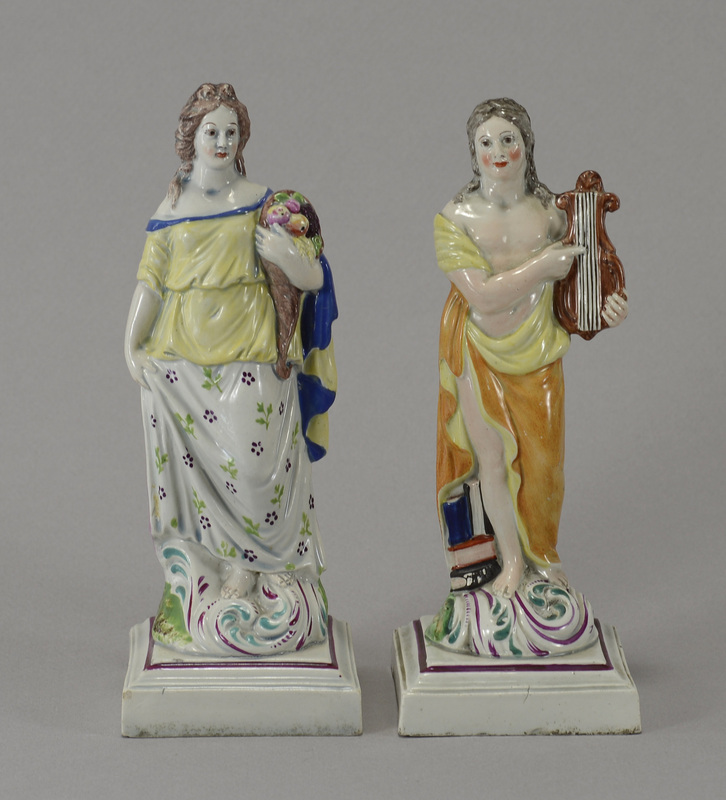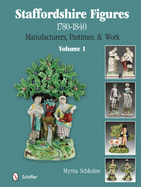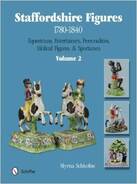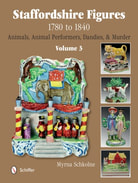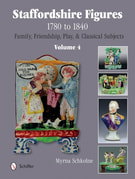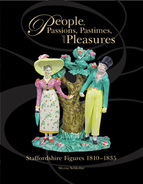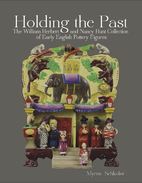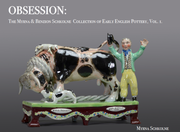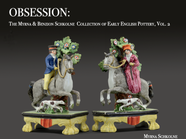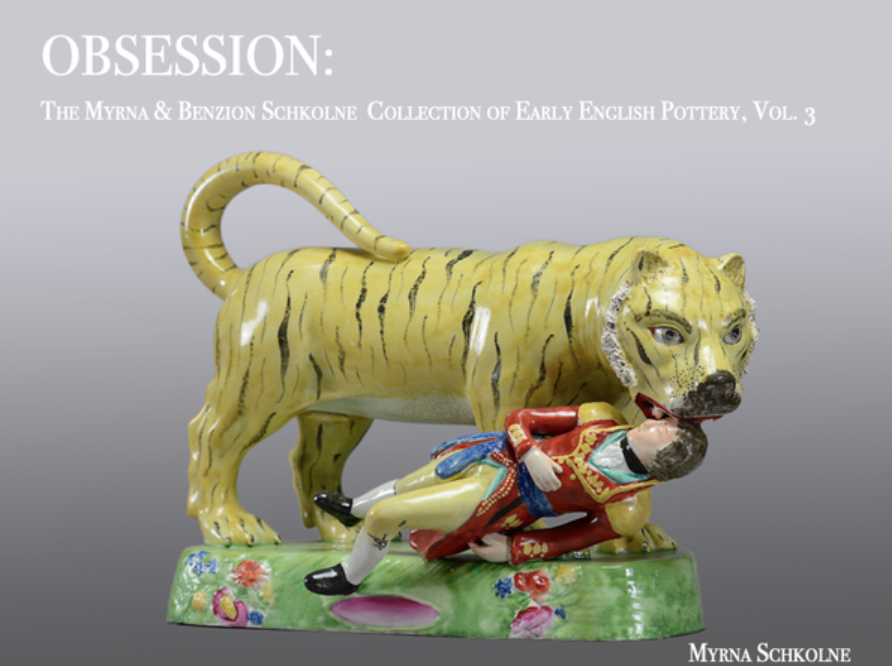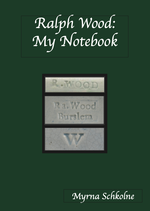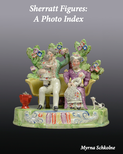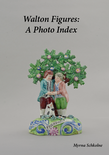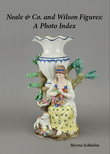No earthenware figures, to my mind, are finer than the enamel-painted ones that manufacturers like Lakin & Poole, Ralph Wood, and Neale & Co. made in the final two decades of the eighteenth century. It's the yummy enamels that grab my heart every time. I would go as far as to say that the Neale enamels are my favorites. For that reason, I was thrilled to find a companion for my Neale figure of Ceres. Here they are:
Ceres is perfect, and so is Apollo. No repairs of restorations on either one. To read the description of Apollo on Madelena's site, you might want to think twice before adding him to your shopping basket. Every little imperfection--most of them original to manufacture--was described in gory detail and shown at larger-than-life size. Notice the grungy edges around the bases of both figures? That happened from standing in the saggar during firing. As the figures stand now, you really don't notice it. Shown enlarged on Madelena's site....well, its a bit like looking at even the finest face in a 10X magnification mirror! Similarly, the tiny flakes on the black book next to Apollo's foot were illustrated at larger than life size. I have to applaud Madelena's honesty, but, frankly, I have often wondered WHY they do this. Last month, I got it! Somebody contacted me about a stunningly perfect figure they had recently bought. The issue was a tiny speck of white clay (think three grains of sugar) that had adhered to the front edge of the base. This collector lived happily with restored bocages and other atrocities, but this little white speck caused much concern. Collectors, if you are that fastidious, find something else to collect. You must expect your earthenware figures to show minor scuffing and wear. Please recoil in horror at a new bocage, but not at an old flake. And don't you think Apollo and Ceres look awfully good at the age of 230+?
I recently came across this candlestick in a private collection.
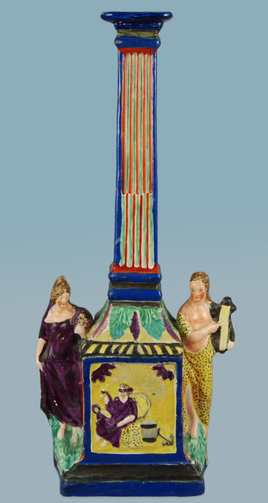
Isn't this a rather stunning object? Ceres stands to the left, and Apollo to the right. The only other example I have traced of this form is illustrated in Haggar. It is from the same molds but is decorated in underglaze colors and is inscribed "Wm Turner" beneath.
